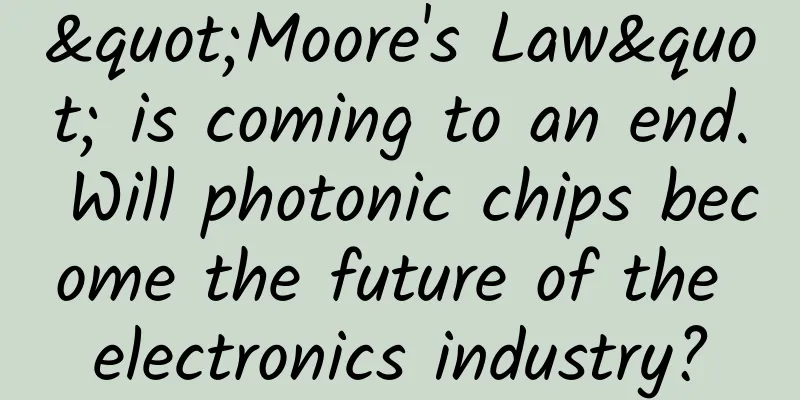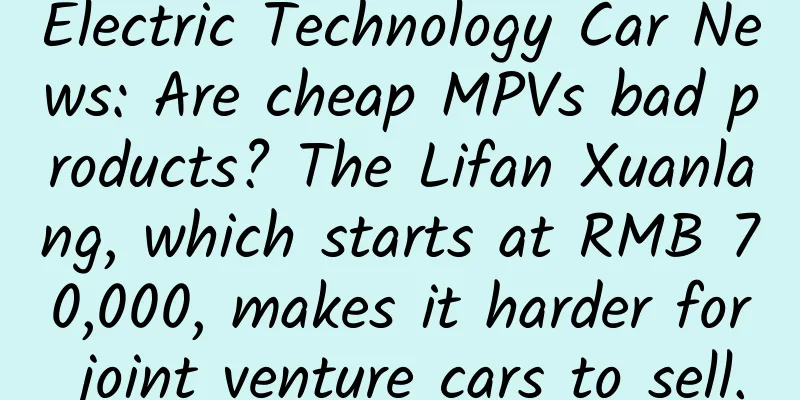"Moore's Law" is coming to an end. Will photonic chips become the future of the electronics industry?

|
"The number of transistors integrated into a chip is expected to double every 24 months." - I believe everyone is familiar with "Moore's Law" proposed by Intel co-founder Gordon Moore. In the past four decades, the IT industry has been driven by this law. However, in recent years, with the slowdown in the development of traditional electronic chips, "Moore's Law" is gradually becoming history. In the future, new chips based on photonic technology may break the limitations of circuit components and build computers with faster computing speeds. Moore's Law is approaching its physical limitAs we all know, the development of the computer industry in the past few decades has always followed "Moore's Law" - the size of semiconductor circuit transistors has become smaller and smaller, and the number of transistors that can be accommodated on a single chip has become more and more, and it has been iteratively increasing at a rate of doubling every 18 to 24 months. The increase in the number of transistors means faster and more efficient processors - that is, the performance of electronic products of the same price will double every 18 to 24 months. Therefore, in order to gain a foothold in the fast-growing IT industry, chip manufacturers have been committed to developing smaller transistors. The size of transistors has jumped from 100 mm in 1907 to 14 nanometers today. Last October, a research team at the Lawrence Berkeley National Laboratory in the United States went a step further and successfully developed a transistor with a gate (the component that controls the current in the transistor) that is only 1 nanometer long - smaller than a DNA chain (2.5 nanometers). However, with the continuous development of chip technology, "Moore's Law" has gradually encountered the limitations of physical laws, and has shown signs of "slowing down" since the beginning of the 21st century. At present, the size of transistors has reached the nanometer level, and the possibility of further shrinking is gradually decreasing. The development trajectory that "Moore's Law" wants to talk about seems to have reached its limit. In fact, the chip industry is also aware of the reality that transistor size is approaching its lower limit. Last year, the Semiconductor Industry Association of the United States, represented by Intel, AMD and Global Foundries, published a report stating that by 2021, the reduction of silicon transistor size will no longer be an economically viable thing. Instead, chips will change in another way. New photonics-based chips may break this deadlockRecently, researchers have gradually shifted their focus from increasing the number of transistors to improving transistor efficiency, hoping to build new chips with higher information processing efficiency. "Chip technology combined with photonics will become the future of the electronics industry." - Scientists represented by Arnab Hazari, a materials scientist at the University of Michigan, said. Currently, transistors rely on the movement of electrons to transmit information. In chips, photons are not affected by electromagnetic resistance, so their propagation speed is faster than that of electrons, up to 20 times. This means that if the electronic signals in the semiconductor circuit are replaced with photons, the computer operation speed can be increased by dozens of times without changing the size of the chip - if the logic of "Moore's Law" is followed, it will take more than ten years to achieve this goal. In recent years, scientists' breakthroughs in photonic chip research have also confirmed the feasibility of this solution. At the end of 2015, a research team from the United States developed the world's first photonic chip that uses lasers for data transmission. The chip can process information at a speed of 300Gbps per square millimeter, which is 10 times faster than existing standard processors. This shows that photonic chips have great potential in improving computer computing speed. In addition, many companies have seized the opportunity of this transformation and joined the "battle" of new technology research and development. For example, the British company Optalysys is developing high-performance computers based on photon technology for processing genomic data, while the French company LightOn is committed to developing data processing systems based on laser technology. However, the research and development of photonic chips is still in its early stages. If they are to be officially implemented and truly commercialized, researchers still face many challenges - how to better integrate new photonic chips with existing computer electronic pathways, how to achieve more stable photon control technology, etc. Arnab Hazari concluded that although photonic devices can currently perform fewer tasks than electronic chips that have been developed for decades, with the deepening of research, photonic chips will soon catch up with the speed of traditional chips and become the core technology of the new generation of computers. As a winner of Toutiao's Qingyun Plan and Baijiahao's Bai+ Plan, the 2019 Baidu Digital Author of the Year, the Baijiahao's Most Popular Author in the Technology Field, the 2019 Sogou Technology and Culture Author, and the 2021 Baijiahao Quarterly Influential Creator, he has won many awards, including the 2013 Sohu Best Industry Media Person, the 2015 China New Media Entrepreneurship Competition Beijing Third Place, the 2015 Guangmang Experience Award, the 2015 China New Media Entrepreneurship Competition Finals Third Place, and the 2018 Baidu Dynamic Annual Powerful Celebrity. |
>>: How long can the huge profits of auto finance last?
Recommend
How to improve user retention through game mechanics?
According to the "2020 China Game Industry R...
The new mutant virus has spread to many countries. Can we still go home for the Spring Festival?
Recently, the emergence of the new variant Omicro...
The Year of the Snake is coming. Let’s grow a plant with a “snake” in it! These plants can be selected →
The auspicious dragon shakes its tail to bid fare...
iOS 16 "Real-time Activities" is adapted to Smart Island: display scores or takeaway progress, etc.!
The biggest update of the iPhone 14 series this y...
The counterattack of the little green men: a review of the history of Android's counterattack against Apple
Once upon a time, Motorola and Nokia were synonym...
How did it become "non-mainstream" when it was known as the "ancient plastic"?
Exquisite and beautiful porcelain represents the ...
Is the cost of joining the Jiamusi Beauty Mini Program high? Jiamusi Beauty Mini Program Franchise Fees and Process
How much does it cost to join a beauty mini progr...
Font size is bigger and clearer! WeChat: Nearly 4.07 million users have activated caring mode
[[427576]] News on October 8, today, WeChat offic...
Self-destructing and hard to detect… Flame, the most "tricky" computer worm virus in history
1. Prophecy Dadong: Xiaobai, do you remember the ...
Going to the heavens for the country! Happy 24th birthday to the Astronaut Corps!
Shenzhou space flight, space walk Staying in the ...
Shenzhou 16 was successfully launched! Pu Pu takes you to imagine the astronauts' departure from a first-person perspective
Long March 2F rocket takes off (Photo source: Chi...
List of 7 essential promotion skills for operators!
Promotional methods + operational knowledge = imp...
Can eating more anti-cancer foods prevent cancer? Can long-term constipation lead to colon cancer? Here comes the cancer science rumor list!
The picture is produced by "Science Refutes ...
SEM promotion: 10 ways to find long-tail words!
I believe that most SEMers are familiar with the ...
Apple has sent out invitations to its new product launch event in October 2014. It’s been a long time since we last saw it!
Apple officially sent out invitations to the medi...









